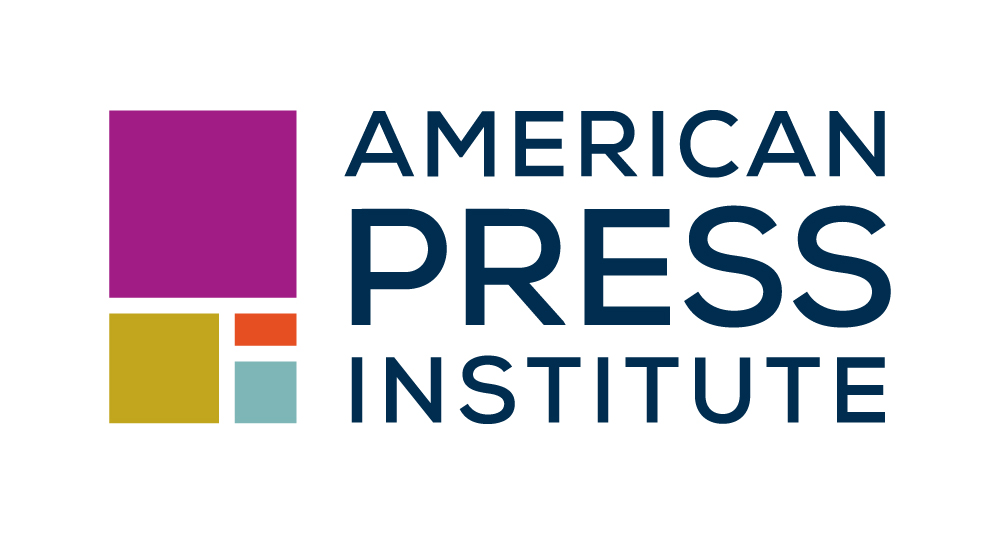
After a six-month pilot of an ecosystem-wide local news advisory committee, we’re sharing a multi-part perspective series on this effort: an outgrowth of our deep, three-year commitment to the Pittsburgh media ecosystem, which included two learning cohorts, a dozen community listening sessions and now this committee. It’s our hope at the American Press Institute that other local news organizations will take up the charge to build trust by engaging their communities. This advanced effort of formalizing a feedback loop through a community advisory committee can further inform coverage, challenge assumptions and cultivate trust and excitement in various news organizations’ local news efforts. We didn’t get everything right in this pilot, as this series will show, but we look forward to learning, iterating, evolving and further committing to the community feedback loop that an advisory group can provide for local newsrooms.
If you are going to create an advisory committee, make sure you allow the members to actually advise and impact your newsroom’s coverage. That is the main takeaway I had from our work with community members in Pittsburgh.
For the past three years, the American Press Institute has worked in the Steel City to improve coverage of traditionally underserved communities via our Inclusion Index. For the past year, we have worked with four newsrooms to supercharge their efforts at community engagement.
In the final phase of this work, we created a community advisory committee tasked with providing feedback to newsrooms. The feedback focused on news coverage and helping newsrooms better connect with key community members. The essays in this perspectives series aim to take you into this work from very different angles, including that of the project lead and manager, the community partner and moderator, the community liaison and advocate, one newsroom and two advisory group members.
We hope this series will encourage you, despite the difficulties it reveals about our efforts, the process and community perceptions of the work.
Putting together an advisory committee seems like a simple process. It can be. There are likely countless examples of newsrooms and other organizations building advisory committees by pulling names from a list of frequent sources, setting up a time to meet, and then having them talk about something of interest to the newsroom. And the newsroom might provide a restaurant gift card for showing up to the meeting.
Can such an approach have an impact? Perhaps. But we opted to build this committee differently.
To ensure a diverse array of voices throughout the city, we selected 11 individuals representing nine different neighborhoods in Pittsburgh. In taking this approach, we adapted a model developed by Oaklandside, a hyperlocal newsroom that has used advisory committees for years.
We set other parameters for our committee.
- First, we wanted to ensure we didn’t burn the committee out. Therefore, we set each term’s length to six months. The committee was asked to attend one meeting per month plus another session where they learned about the community engagement plans of each of our four partner newsrooms.
- We made sure they were paid adequately for their time. Each member received a $1,600 stipend. Using a model we have employed for our listening sessions, we also built time for community members and journalists to convene over a good meal before each monthly meeting.
- Finally, we created an additional feedback loop to monitor committee members’ satisfaction with the experience. For this reason, we brought aboard a community liaison to work directly with the advisory committee members. The liaison attended every meeting and spoke with committee members after and between meetings to get feedback about the process.
The result? Rather than a committee that simply listened to the concerns of newsrooms, we created one that empowered community members to influence and impact the work of these newsrooms. In other words, we created an advisory committee and allowed them to advise.
First, in part because of the strong moderation of our partner, the Pittsburgh Black Media Federation, and the presence of the community liaison, many conversations were steered by the concerns of the advisory committee — not the concerns of the newsrooms. For example, before the election, an attempt was made to focus a meeting on politics. The advisory committee quickly shut this conversation down.
Instead, the members expressed concerns about the mental health and well-being of Pittsburgh residents. This was a more significant local concern for them than the presidential election. And it inspired a listening session featuring local mental health experts.
Additionally, the committee wanted community members to know how to reach local journalists if they had concerns about specific issues. For this reason, our partner for this work, the Pittsburgh Black Media Federation, has started a core catalog of journalists in Pittsburgh for public distribution.
We made efforts to listen for the values of the committee members. Our team of local stakeholders aimed to amplify and catalyze what they heard from the committee, ensuring the group meetings centered the community and its voices. However, the effort wasn’t perfect. Here are some things we would change or tweak for the next time we facilitate an ecosystem-wide community advisory committee. We hope they’re helpful in your own efforts.
Committee members were concerned that news articles were not being produced immediately.
The fix: Our committee will have a more substantial onboarding process. This may include core tenets of journalism and how newsrooms work as well as a newsroom tour and observing an editorial meeting. Our expectations will evolve to include FAQs such as what happens when your organization makes the news. A published piece and landing page for the committee will also be created during session onboarding to acknowledge, celebrate and further invite residents into this work.
Some members expressed a desire for a longer service term.
The fix: While we were limited in what we could do, based on our funding, there are advantages to extending the time period of service from six to nine months, with the community support term serving 12-month cycles. Instead of worrying about burning them out or waning interest, we will build a mechanism to replace members who feel their time is up at nine months while continuing to hear from those who can commit to a longer period, perhaps as “at-large” members.
This may not work in all cases, and it likely will not work if the committee comprises unpaid volunteers. However, as we have pushed newsrooms working with the inclusion index to have high expectations, we should also set high expectations for the advisory committees we create. The goal should always be to involve committee members as true partners. If authentic partnership with your community members isn’t your goal, you may be better off having a series of listening sessions.
Some members were concerned that the effort would have no long-term or material impact.
The fix: Our committee will have a process and channels to track, share and celebrate gains with the community. Going forward, lessons learned from advisory committee meetings should also be shared with the public, and we will ensure ownership of this with our assigned community partner. For example, did the advisory committee lead to stories? Let people know. Did the advisory committee help your newsroom rethink an engagement practice? Let the public know. Did the committee encourage and change hiring practices? Let the community know.
This will make sure the committee knows their efforts were fruitful and help the community know that the participating newsrooms are allowing the advisory committee to indeed advise them, which again, is the entire point.
Work done in the dark is extractive. Work done within the full view of the public builds trust.
In many ways, this concern brought us full circle regarding the Inclusion Index in Pittsburgh. A major goal of the Inclusion Index, if not the primary goal, is to have newsrooms build infrastructure around their efforts to better serve communities. Infrastructure must include systems for accountability — especially from the communities these news organizations seek to serve. This was why, for the first part of the Index, we produced a study focused on the Pittsburgh News Ecosystem and had our participating newsrooms publicly discuss their plans for dealing with issues. It’s also why we held a public event following the second phase of our work, which focused on improving engagement practices.
With that said, the committee certainly had an impact. Several stories have been produced because of the conversations and engagement work the participating newsrooms did during the Inclusion Index project. The effort has also brought together community members who may have otherwise not shared information. Frequently, the committee members shared information on issues and events with one another and invited each other to events.
This part — the bringing together of community members — is another essential function of a community advisory committee. While the newsroom can, if chosen, hold a unique position as convener and connector, this function goes beyond the newsroom to support healthy, thriving communities and neighborhoods.
You will read more about this impact during a series of articles written by those who participated in the committee. In each perspective’s piece, you will see noted a “key learning” at the top, which we hope will further direct your own exploration of a community advisory committee. Should you need a thought partner in your work or are interested in API’s training and support to launch one, please email our Vice President of Journalism Strategy, Sam Ragland, at sam@pressinstitute.org.
Share with your network
From listening to action: What a local news advisory committee taught Pittsburgh newsrooms
You also might be interested in:
When we founded The 51st, we wanted to lead a news organization shaped by D.C. residents. And the Community Connector program has become an integral way of doing so.
From the outset, we knew we wanted to highlight art and help people connect with other residents who had a positive vision for Birmingham. Here are methods that helped us fill a historic theater for a fun and engaging evening.
If cultural experiences beyond the Blues were offered, would visitors be interested? And what could be done to help local residents build capacity to compete with the larger tourism industry?








